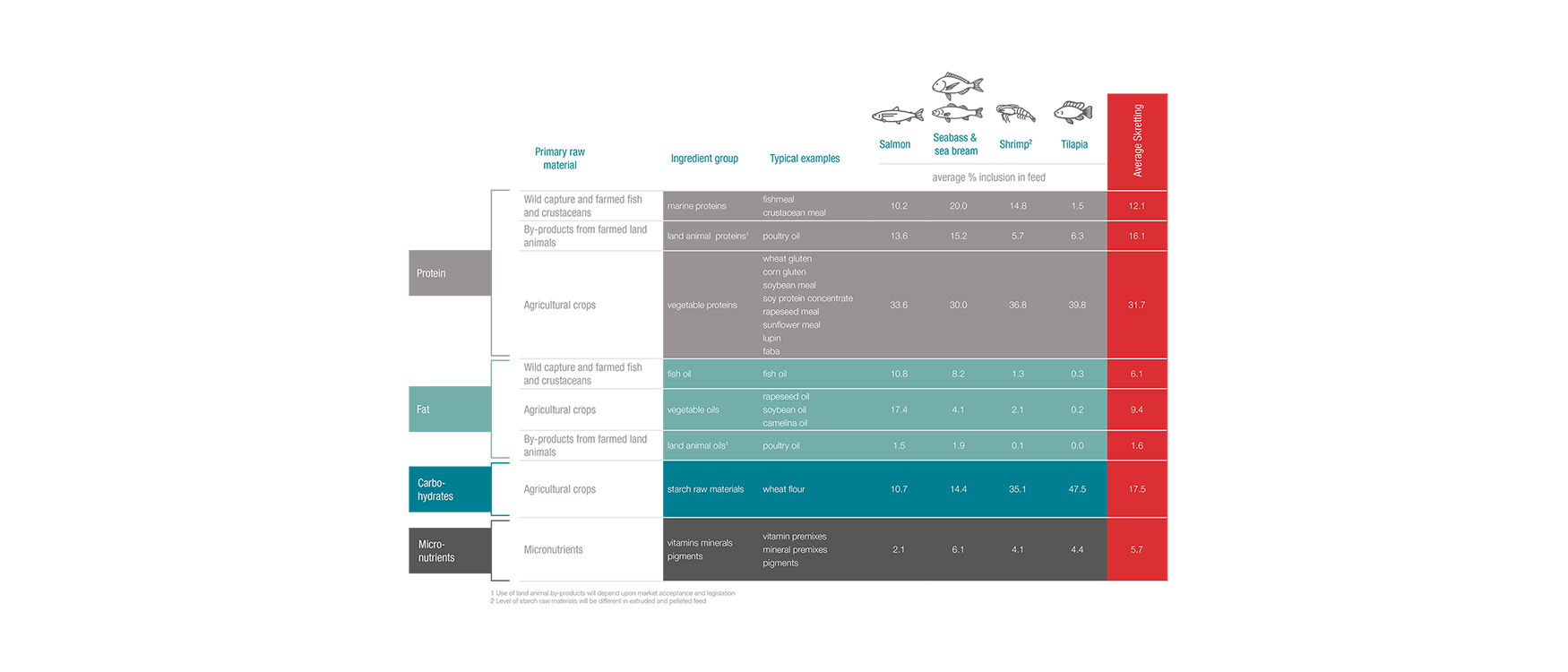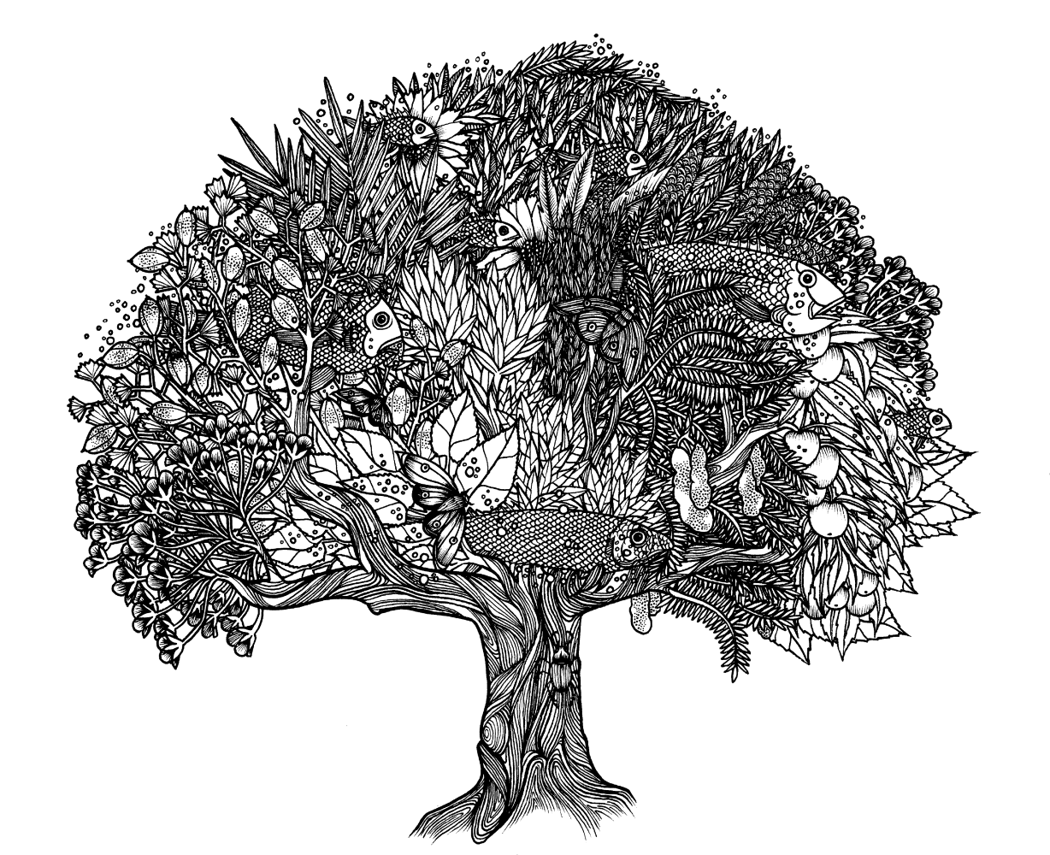What ingredients are in Skretting foods?
Aquaculture feeds contain essential nutrients that must be administered in the right amounts for fish and prawns to grow healthily. These nutrients come from a variety of different sources. In addition to fishmeal and fish oil, they can contain other vegetable meals and oils, fish discards, and processed by-products of terrestrial animals.
Skretting foods can contain up to 50 ingredients to ensure a complete and balanced nutritional profile. These could include:
- Agricultural crops such as wheat gluten, corn gluten, soybean meal, soy protein concentrate, rapeseed meal, sunflower meal, lupins and fava beans.
- Wild-caught fish and crustaceans for ingredients such as fishmeal, crustacean meal, and fish oil.
- Off-products of terrestrial farmed animals such as poultry meal, feather meal, blood meal and poultry oil.
- Wild-caught fish and crustacean by-products , such as fishmeal, crustacean meal.
- By-products of farmed fish and crustaceans, such as fishmeal, crustacean meal, fish oil and salmon oil.
- New ingredients such as insect meal and algae oil.
- Micro-ingredients, including vitamin and mineral premixes and pigments.

Like humans, fish and shrimp have specific nutritional requirements, including protein, fat, carbohydrates, vitamins, and minerals. The nutrients in our food come from a variety of natural raw materials, depending on the species and the life cycle they have reached. Aquaculture feeds, which are mainly provided in the form of dried pellets, contain all the essential nutrients needed to keep fish and prawns healthy and growing and meet their nutritional needs during different life stages.
Fishmeal and fish oil are two of the most well-known marine ingredients used in aquaculture feeds. Fishmeal is a powder obtained after cooking, pressing, drying, and grinding fresh raw fish, while fish oil is a liquid extracted from cooked fish. Both are obtained from catching populations of small, bony, and fast-growing short-lived and blue-blue fish for which there is little or no demand for human consumption. Offcuts unfit for human consumption, and resulting from the processing of seafood, are increasingly contributing to the production of fishmeal and fish oil. Skretting has strict policies for the sustainable sourcing of raw materials.

MicroBalance
One of Skretting's most innovative developments in recent years has been the development of fully flexible food, made possible through an innovative concept we call MicroBalance. Substituting ingredients is not as easy as you might expect: micronutrition needs to be fully understood and taken into account to ensure that health and growth are not compromised. Many years of R+D at the Skretting Aquaculture Research Centre (ARC) have ensured that we can now make feed that is completely flexible when it comes to raw materials, and that meets the needs of fish and prawns, with no negative effects on animal health and performance.
Skretting recognises that one of the most positive impacts it can have in the context of sustainability is making sure that it makes its food from responsibly sourced raw materials. Therefore, we strive to improve the sustainability of our purchasing and feeding formulas.